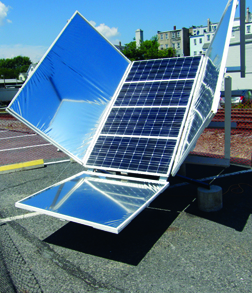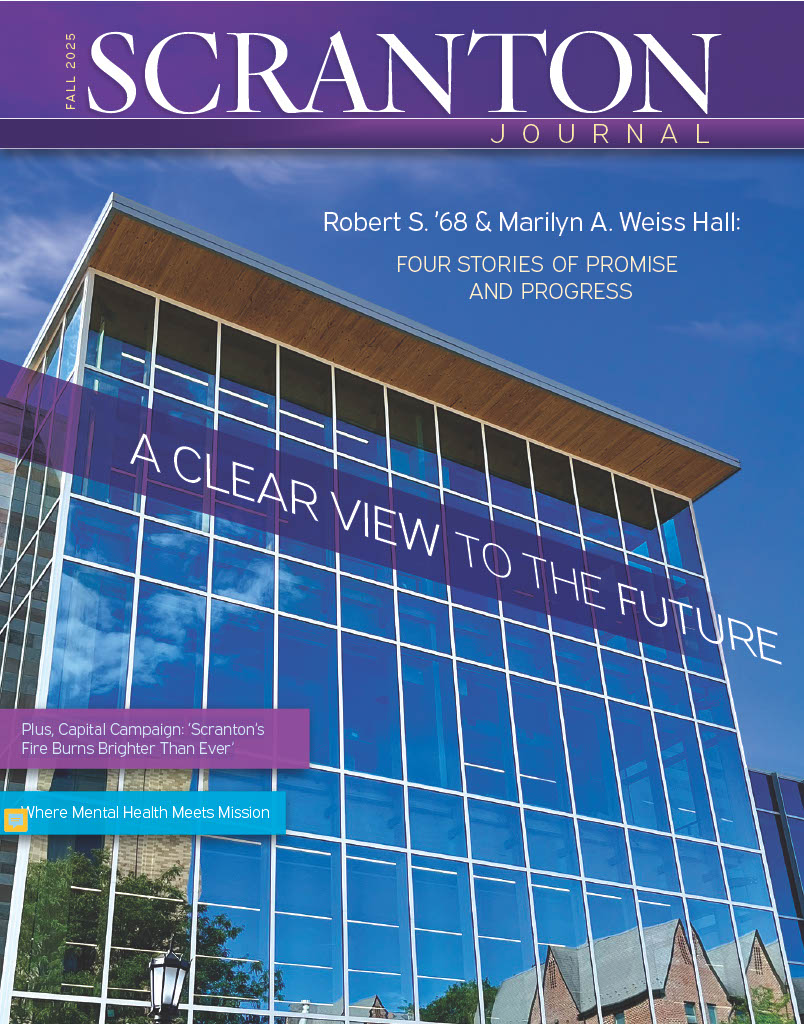University of Scranton young engineers’ focus on sustainable energy benefits local and global communities.
When he was an engineering student, Greg Marx ’05 never thought of himself as an environmentalist. Nearly a decade later, he is a vehicle applications engineer with BAE Systems, leading a team in the HybriDrive® Solutions business area to develop zero- emission, fuel cell hybrid buses, several of which are already on the road in Palm Springs, California.
“I’ve spent a lot of time working in southern California, and when I’m driving there, I can always see a layer of smog hanging over the area,” said Marx, who was recently recognized on MassTransit’s “Top 40 under 40” list for his work. “I’m glad I’m working on a project that will help reduce this damage to our environment down the road.”
Marx’s focus on clean energy — and even on hybrid buses in particular — is not uncommon among Scranton’s engineering students. Tom Cummings and Jason Shilinski, both members of the class of 2007, have worked alongside him in the HybriDrive® Solutions group.
Christine Zakzewski, Ph.D., chair of the Department of Physics and Electrical Engineering has noticed the trend.
“There is strong current of this interest in sustainability flowing through the Department,” she said.
Last year, she and Mark Murphy, director of sustainability at the University, led a team of students on a project that assessed Abington Heights High School’s energy use. The project, An Engineering Approach to Sustainability, was performed as part of an engineering laboratory. The group, Dr. Zakzewski said, was thrilled about the potential of not only helping to reduce the school’s energy costs, but also the positive effects the changes could have on the environment.
The team eventually made recommendations based on the school’s existing energy usage, suggesting improvements such as occupancy sensors, lighting control systems and even a water conservation project.
“The students gained valuable experience that tested their analytical and technical knowledge analyzing real-time data, working on a very timely topic: energy saving and sustainability,” wrote Murphy in the final report. (Murphy has also helped to assess issues and make adjustments to most University buildings, which you can read more about here.)
“Climate change is a hot-button issue right now,” said Professor Nicholas Truncale, faculty specialist in the University’s Physics and Electrical Engineering Department.
This is especially true in light of the 2014 National Climate Assessment, which warns of human impact.
His solution? On top of bringing next year’s Energypath conference to our Scranton community, he is committed to something even larger: harnessing the sun’s energy.
“I don’t know of a better way to reduce our carbon footprint,” said Truncale.
Truncale and James Loven, laboratory equipment manager for the department, began to collect data in the fall of 2012 from stationary solar panels positioned in a University parking lot on Madison Ave. They received a grant from the Sustainable Energy Fund (SEF) to study solar panels that adjusted their orientation relative to the position of the sun. Truncale and Loven later recruited Nate Williams and Frank Pallien, now rising juniors in the engineering program, to work with them on a Reflective Solar Tracker (RST).
The patent-pending RST produces 140 percent more energy than a stationary solar panel on sunny days. And on cloudy days? The computer uses astronomical data from the United States Naval Observatory to track where the sun actually is, maximizing energy output.
The engineering team thought that placing an RST in a remote village might not only help collect important data, but also help children living in a small community without power. Thanks to a rather serendipitous encounter, an opportunity arose to get a travel-sized RST to Nkokonjeru, near Masaka, Uganda, thanks to Charles Pinches, Ph.D., a theology professor at the University. He heard about the RST project and volunteered to take a device with him and his students on their January 2014 intersession travel course, “Christianity in Africa.”
In Nkokonjeru, the RST would help power a water pump and lights in the school. Before, the laborious task of pumping water fell on the girls in the village. Now, with less time required for pumping water, the girls might be able to stay in school, where newly installed lights would illuminate their work inside.
The engineering team was given a relatively short time to develop the small version of the RST, as well as train the students in Pinches’ course to assemble and install it. The College of Arts and Sciences fully funded the operation. Although it was a challenge to get through airport security, the RST arrived intact and the team will be gathering data in the near future.
“The RST is not the answer to all of our planet’s energy problems,” Williams wrote in a recent article in Magpi magazine. “Most of the problems are local and need to be dealt with on a case-by-case basis. This does not mean, however, the impacts from this project were not literally felt on the other side of the world.”
While it’s true that our Scranton community may not have the answers to our energy problems or the environmental issues we face, they certainly have an eye toward the future.





